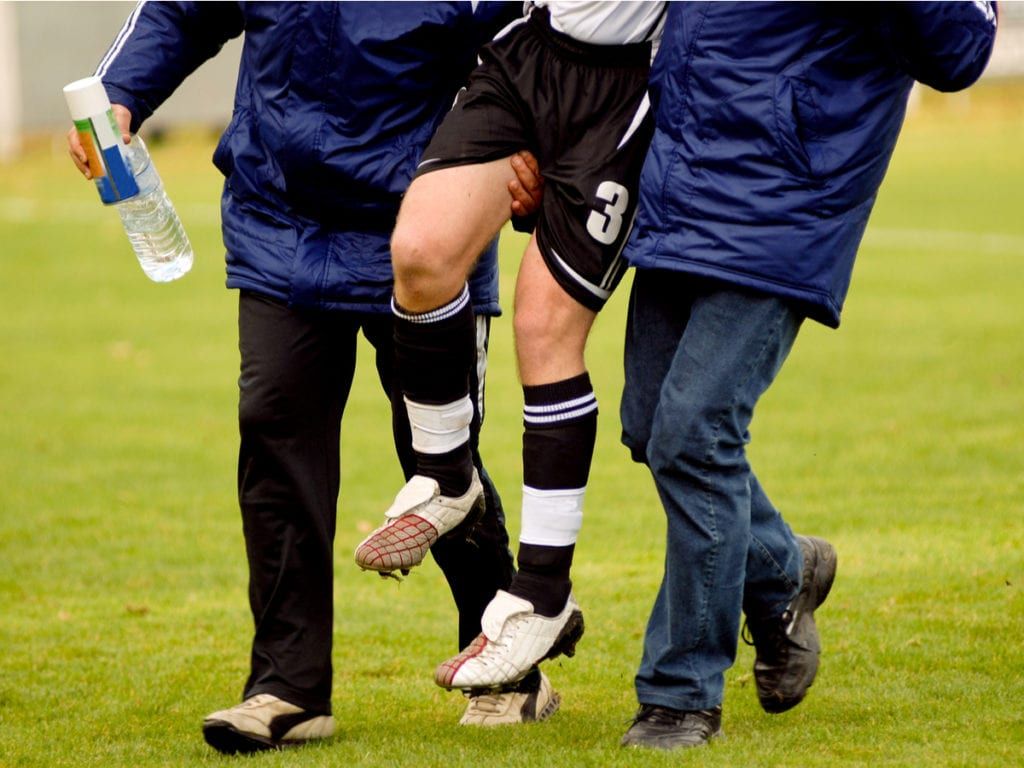Every year millions of people participate in sports in their schools, athletic leagues, or just hanging out with their friends. As a result, urgent care centers and emergency rooms see thousands of people every day experiencing injuries ranging from minor to severe. The majority of the injuries resulting from sports are soft tissue injuries, such as contusions, sprains, and strains. Bursitis and tendinitis are also common results of sports activities. In many cases, these injuries can take an extended amount of time to heal, even when appropriate treatments are used.
Types of Soft-Tissue Injuries
There are two classifications of soft-tissue injury, acute, and overuse. Which classification an individual injury falls into is determined by how the injury was caused.
- Acute Injury: This form of injury is the result of traumatic events such as a blow, twist, or fall. Contusions, strains, and sprains are all types of acute injuries.
- Overuse Injury: Repetitive motion gradually damages joints, tendons, and muscles over time. Overuse injuries are the result of this kind of damage, with bursitis and tendinitis being prime examples.
Treating Acute Soft-Tissue Injuries
How severe an acute injury varies with each specific instance. The first steps that should be taken in most cases of acute injury have been codified into what is known as the RICE protocol. This acronym means Rest, Ice, Compression, and Elevation.
- Rest: Whatever activity you were doing when the injury occurred should be stopped. Crutches are common for leg injuries to avoid putting weight on them.
- Ice: Applying ice packs to the wounded area for 20 minutes at a time can help. This should be repeated a few times each day, but at no point should ice be put directly on the skin.
- Compression: An elastic compression bandage helps to prevent blood loss and reduce swelling.
- Elevation: The injured area should be held above your heart to help limit the amount of swelling that occurs.

Sprains
When a ligament gets torn or stretched, it’s known as a sprain. A ligament connects one bone to another with a band of connective tissue that is remarkably durable. Wrists, knees, and ankles are all particularly vulnerable to sprains. Falling or twisting a joint severely or rapidly can result in a sprain. There are three levels of severity in sprains:
- Grade 1: Minor damage and slight stretching results in a Grade 1, or Mild, sprain.
- Grade 2: When the ligament begins to tear, it’s known as a Grade 2, or Moderate, sprain. The joint becomes loose or moves abnormally.
- Grade 3: When the ligament tears through completely, it’s known as a Grade 3, or Severe, sprain. The joint becomes completely non-functional in cases like this.
Strains
Tendons and muscles can experience a strain. Muscles and tendons work together, with the tendons being the tissue that holds together the bones and muscles with fibrous cords. The back, leg, and feet are all common places where strains can occur. Strains come in a variety of severities, ranging from a simple stretch of the muscle to a tear that can be minor to complete, separating completely from the bone. RICE protocol works as a basic treatment approach to these injuries, with other treatments depending on the severity of the injury.
MD First Primary & Urgent Care serves the community of Lancaster, SC, with treatment services for injuries like these. If you’ve experienced a sprain or strain, give us a call at 1-803-283-2300 to see if you need to come in right away, or stop by our office at 1130 Hwy 9 Bypass W for immediate care.


